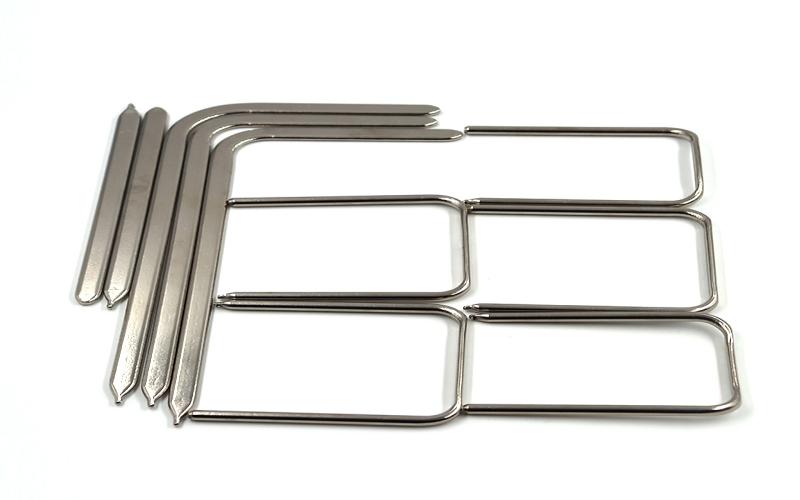Heat Pipe Thermal Conductivity: The Key to Efficient Heat Transfer
Heat pipes have revolutionized the field of thermal management, offering a highly efficient means of transferring heat from one location to another. At the heart of this technology lies the concept of heat pipe thermal conductivity, which enables the rapid and efficient transfer of thermal energy. In this article, we will explore the various aspects of heat pipe thermal conductivity and its significance in enhancing heat transfer performance.
The Basics of Heat Pipe Thermal Conductivity
Heat pipe thermal conductivity refers to the ability of a heat pipe to transfer heat across its length. It is a measure of how effectively thermal energy can be transported from the heat source to the heat sink. The higher the thermal conductivity of a heat pipe, the more efficient it is in transferring heat. Heat pipes achieve high thermal conductivity through the combination of their unique design and the thermophysical properties of the working fluid inside.
Design Factors Affecting Heat Pipe Thermal Conductivity
The thermal conductivity of a heat pipe is influenced by various design factors. One of the key factors is the choice of materials for the heat pipe's casing and wick structure. Materials with high thermal conductivity, such as copper or aluminum, are commonly used to facilitate efficient heat transfer. The design of the wick structure also plays a crucial role in enhancing the thermal conductivity of a heat pipe. A well-designed wick structure ensures proper fluid circulation and maximizes the contact area between the working fluid and the heat pipe walls.
Working Fluid and Heat Pipe Thermal Conductivity
The working fluid inside a heat pipe is another critical factor affecting its thermal conductivity. Different working fluids have varying thermal conductivities, and the selection of the appropriate fluid depends on the specific application requirements. Common working fluids used in heat pipes include water, ammonia, and various refrigerants. The thermophysical properties of the working fluid, such as its boiling point, latent heat of vaporization, and viscosity, significantly impact the thermal conductivity and overall performance of the heat pipe.
Thermal Resistance and Heat Pipe Thermal Conductivity
Thermal resistance is a measure of how effectively a material or system resists the flow of heat. In the context of heat pipes, thermal resistance refers to the resistance encountered by the thermal energy as it travels through the heat pipe. A lower thermal resistance indicates higher heat pipe thermal conductivity and better heat transfer performance. By minimizing thermal resistance, heat pipes enable efficient heat transfer over long distances and across temperature gradients.
Enhancing Heat Pipe Thermal Conductivity
Several techniques can be employed to enhance the thermal conductivity of heat pipes. One approach is to improve the wick structure design to promote better capillary action and fluid circulation. This can be achieved through the use of advanced manufacturing techniques, such as additive manufacturing or microfabrication. Another method is to optimize the choice of working fluid by considering parameters such as its thermal conductivity, vapor pressure, and compatibility with the heat pipe materials. Additionally, the use of nanofluids, which are suspensions of nanoparticles in a base fluid, has shown promise in enhancing heat pipe thermal conductivity.
Applications of Heat Pipe Thermal Conductivity
The high thermal conductivity of heat pipes makes them ideal for various heat transfer applications. One notable application is in cooling electronic devices, where heat pipes are used to efficiently dissipate heat generated by high-power components. Heat pipes are also widely employed in thermal management systems for spacecraft, where they play a crucial role in maintaining optimal operating temperatures for sensitive equipment. In addition, heat pipes find applications in renewable energy systems, such as solar thermal collectors, where they enhance the efficiency of heat transfer from the absorber to the heat storage medium.
Challenges and Limitations of Heat Pipe Thermal Conductivity
While heat pipes offer numerous advantages in terms of heat transfer efficiency, they are not without their limitations. One of the challenges is the dependence of heat pipe performance on the orientation with respect to gravity. Heat pipes function optimally in a vertical or near-vertical orientation, as gravity aids in the circulation of the working fluid. Horizontal or inclined orientations may result in reduced thermal conductivity and lower overall performance. Another limitation is the heat pipe's sensitivity to extreme temperatures. Excessive heat can cause the working fluid to evaporate too rapidly, leading to a decrease in thermal conductivity. It is essential to consider these factors when designing heat pipe-based thermal management systems.
The Future of Heat Pipe Thermal Conductivity
As heat transfer requirements continue to evolve, there is ongoing research and development focused on enhancing heat pipe thermal conductivity. Advanced materials, such as carbon nanotubes and graphene, are being explored for their potential to further improve thermal conductivity. Innovative manufacturing techniques and numerical modeling approaches are also being employed to optimize heat pipe design and performance. The future holds great promise for even more efficient heat transfer systems driven by advancements in heat pipe technology.

